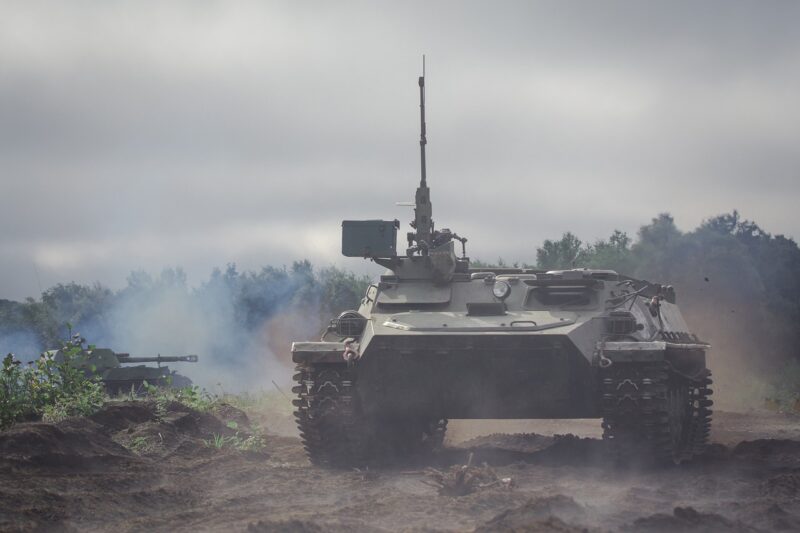How Anti-Tank Weapons Have Shifted the Balance of Power in Ground Combat
November 16, 2024

In the realm of modern warfare, the effectiveness of ground combat units hinges significantly on their ability to penetrate enemy armor. With militaries valuing mobility, protection, and firepower, the development and deployment of anti-tank weapons have played a crucial role in shaping battles. This article will explore how these weapons have altered the dynamics of ground combat throughout history and continue to do so today.
The Evolution of Anti-Tank Weapons
The development of anti-tank warfare traces back to World War I when the first tank units were deployed on the battlefield. Initially, tanks were relatively invulnerable to damage, suggesting that they could dominate the battlefield. However, as they became a central component of military strategy, so too did the need for weapons specifically designed to counter them.
1. **World War II Advances**: During World War II, the introduction of powerful anti-tank guns, such as the German 88 mm, provided infantry units with the means to effectively engage and destroy heavier enemy tanks. The British also produced the famous PIAT (Projector, Infantry, Anti Tank), which propelled hollow-charge grenades capable of penetrating armored vehicles.
2. **Post-War Developments**: The Cold War era witnessed the introduction of guided anti-tank missiles. These lightweight, portable systems, such as the American TOW (Tube-launched, Optically tracked, Wire-guided) and the Soviet AT-3 Sagger, revolutionized ground combat by allowing infantry to engage armored units from a safe distance.
3. **Modern Anti-Tank Systems**: Today, anti-tank weaponry includes advanced systems such as the FGM-148 Javelin and the Israeli Spike missile. With features like fire-and-forget guidance, top-attack capability, and automation, modern anti-tank systems provide unparalleled versatility and lethality against armored targets.
Impact on Ground Warfare Dynamics
The emergence and evolution of anti-tank weapons have fundamentally shifted the balance of power in ground combat. Here are some key impacts observed over the decades:
1. **Countering Armor Dominance**: Anti-tank weapons have effectively reduced the dominance of armored vehicles on the battlefield. With advanced targeting systems and striking power, a single soldier equipped with a modern anti-tank weapon can neutralize a tank, making armored units more susceptible to ambush and varied attack strategies.
2. **Shifting Tactical Approaches**: As infantry units became equipped with anti-tank capabilities, traditional tank tactics also evolved. Combined arms operations, utilizing infantry, armor, and air support, became imperative. Tanks, while still valuable, now require close coordination with dismounted infantry to defend against anti-tank threats.
3. **Force Multipliers**: The lethality of anti-tank weapons can constitute a force multiplier. Countries with limited armored resources can still pose a credible threat to superior tank forces through the strategic use of anti-tank artillery, missiles, or mines. This democratizes battlefield capabilities, empowering smaller nations against larger adversaries.
4. **A Psychological Warfare Component**: The knowledge that enemy forces are equipped with effective anti-tank capabilities serves as a psychological barrier to the tactical deployment of armor, often leading to over-caution and ground units hesitating before committing these resources into potential ambush zones.
Case Studies of Anti-Tank Weapons in Action
Several conflicts highlight how anti-tank weapons have significantly influenced ground combat outcomes:
1. **Vietnam War**: The introduction of the B-40 rocket launcher by the North Vietnamese provided troops with the necessary power to challenge American armor effectively. U.S. tanks that once roamed freely began operating with heightened caution, aware that they could be attacked by these simple yet effective weapons from guerrilla forces.
2. **Gulf War (1991)**: The Gulf War showcased modern anti-tank systems like the American TOW missile, which wreaked havoc on Iraqi armor. The effectiveness of anti-tank weapons in destroying armored vehicles pushed the Iraqi army to adopt new, defensive strategies, heavily relying on entrenched positions rather than mobility.
3. **Syrian Civil War**: The diverse array of anti-tank weapons deployed by rebel forces, such as the 9M133 Kornet and the ATGM-150, drastically altered the combat landscape against conventional Syrian armored units. The effectiveness of such systems created strategic advantages for less-equipped forces on the battlefield and showcased the changing nature of warfare.
The Future of Anti-Tank Warfare
As we move further into the 21st century, we can anticipate continued advancements in anti-tank technologies:
1. **Increased Autonomy**: Future anti-tank systems may include drones and robotic platforms that could perform reconnaissance and fire on target autonomously while minimizing risks to human operators.
2. **Hypervelocity Projectiles and Directed Energy Weapons**: The potential development of new kinetic and electromagnetic weapons could change the current paradigms, rendering conventional armor less effective than ever before.
3. **Enhanced Integration with Network-Centric Warfare**: Anti-tank systems will likely become increasingly integrated into broader information networks, enhancing targeting capabilities and interoperability with other force components.
Conclusion
The evolution of anti-tank weapons has undoubtedly shifted the balance of power in ground combat. As technology advances, the development of more sophisticated anti-tank systems will continue to shape military strategies and alter the dynamics of warfare. Consequently, understanding these changes is essential for military planners and strategists in preparing for future conflicts. The careful balance between offensive and defensive capabilities will be key to maintaining a competitive edge in ground combat.
As history has demonstrated, the ability of ground forces to effectively counter armor will remain a critical factor in determining the outcomes of battles in the future.








